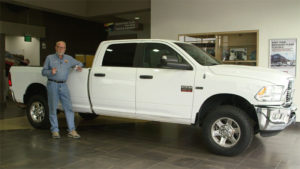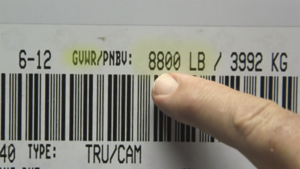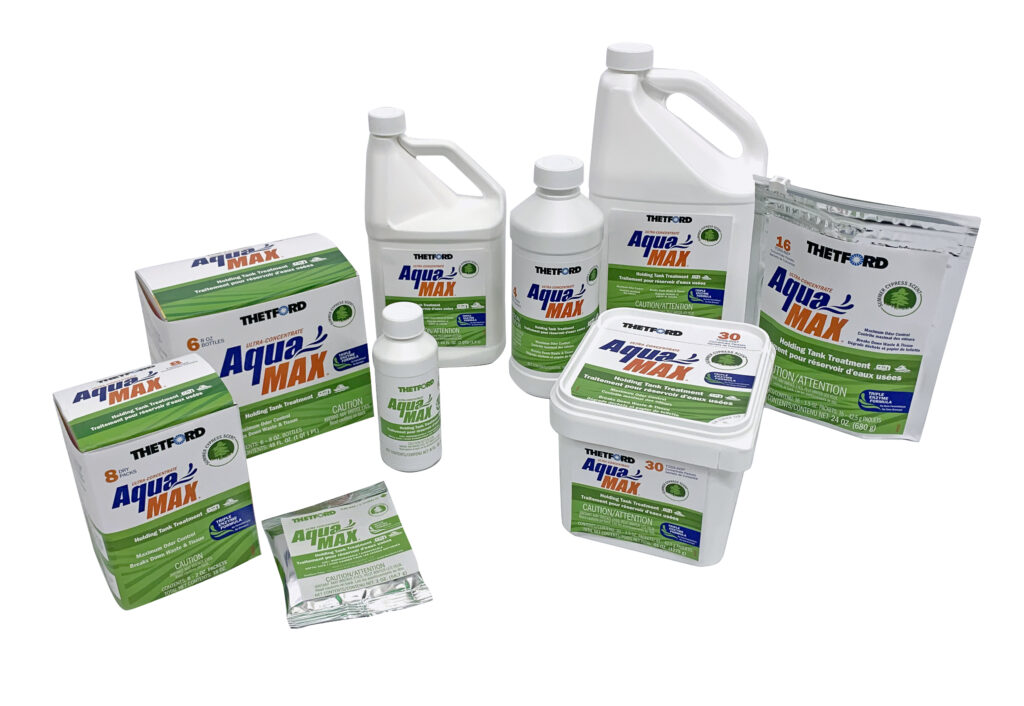rv industry
Fitting a Slide in Truck Camper to a Truck
Slide-in truck campers are gaining in popularity among RV enthusiasts. They’re easy to use, it’s easy to drive and park a truck and camper, they’re comfortable and fully equipped, and you can still tow a trailer with a camper aboard. If you own a camper or you’re planning to get one, you may now be out shopping for a truck to haul it. Regardless of your favorite truck brand, there’s a model that can haul a camper, within reason and observing the specifications, of course. Now, almost any well stocked car lot, new or used, is going to have a variety of options for camper hauling.
 For example, here at the Guaranty RV pre-owned sales lot in Junction City, Oregon, you have a ton of choices to pick from. Campers can be used on all kinds of trucks, two or four wheel drive, automatic or manual, all kinds of cab configurations, gas or diesel power. Many are fully available for hauling a truck camper. But you can’t just plop any camper on any truck. You need to know and apply the weight and loading rules for safe and practical camper use. Before you start shopping for a truck, it is vitally important that you know how much weight you’re going to be carrying. Are you going to, for example, pick a fold down truck camper with the roof that raises and lowers? They’re a little bit lighter weight. Or are you going to select a full size hard side camper? They’re a little bit heavier.
For example, here at the Guaranty RV pre-owned sales lot in Junction City, Oregon, you have a ton of choices to pick from. Campers can be used on all kinds of trucks, two or four wheel drive, automatic or manual, all kinds of cab configurations, gas or diesel power. Many are fully available for hauling a truck camper. But you can’t just plop any camper on any truck. You need to know and apply the weight and loading rules for safe and practical camper use. Before you start shopping for a truck, it is vitally important that you know how much weight you’re going to be carrying. Are you going to, for example, pick a fold down truck camper with the roof that raises and lowers? They’re a little bit lighter weight. Or are you going to select a full size hard side camper? They’re a little bit heavier.
And then maybe even has a slide-out room, that adds weight too. All these figures and all the weights are really important to know. The data label on the back of the camper is a great place to start. It has weight information that’ll get you on the right track toward making a good matchup between the truck and camper. Once you have that all-important weight data about the camper, there’s other things you need to consider. For example, does it fit a short bed truck, or are you gonna require a full size 8 foot long bed? These are things you need to know ahead of time. It also helps to know, for example, how much weight you’re gonna be carrying in addition to the camper, how much heavy sports equipment, personal cargo, hobby gear, whatever you’re hauling along. All of these things count.
Now, what size of truck you buy, of course, is also important. You have 1500, 2500, 3500 series. The 3500 is also known as a one ton, can be either single rear wheel or dual rear wheel. All of these trucks can be specifically made into a proper truck camper. But if you’re thinking 1500 series, a lot of the current 1500 trucks have tow ratings for the trailers that are tremendous. But that does not necessarily increase the amount of weight that can be carried in the bed of the truck, like a truck camper. So, it’s important to keep all these numbers in mind, weight and so on. And chances are your best bet is to consider the 2500 or 3500 if you’re having any kind of a larger hard side truck camper. A truck that’s a dually, which would be either a 3500 series or one ton truck, has a couple of advantages and one disadvantage. The main disadvantage being it’s a little bit wider, so it’s a little harder to park in some of the small parking spots in town. The advantage is with the extra tires out here, the axle is a little bit wider, and that creates greater roll resistance. So, when you have a high center of gravity like a camper on the truck, a load like that, it makes it a little more stable going down the road. It also provides a modicum of safety. If one of the rear tires goes flat, you have the other tire to safely carry the truck, and let you drive and park in a place to be able to change the flat tire. In addition, the 3500 with the dually has the best load capacity. So, if you’re going to be hauling a big camper with slide-outs and so on, this is just about what
you have to use.
 We were looking for a used 2500 series truck that would be a good match for the lighter weight fold down camper we had in mind. We finally found one out of town, went down to take a look at it. And that was just the start of the process. Well, it’s been an awfully smoky, cloudy time here in Oregon with all the brush fires and forest fires going on. But we found our perfect truck after a long search here in Medford, Oregon at Lithia Chrysler Jeep Ram Dodge. This is the 2500 2012 Ram, has all the characteristics that we wanted in a truck. 2500 crew cab, four wheel drive, long box. It’s got the 8 foot box, so we can put a good size camper on here. And the 5.7 liter Hemi engine, which is strong enough to be able to haul anything we’re gonna put on as a camper. And it’s also got a really decent tow rating. So, we’re gonna be using this as the basis for putting together a truck that’s going to be tremendously useful and functional as a camper hauling vehicle for us. Now, here on the driver side door jamb is the truck data weight label. This is really important information that’s vital for making a good truck and camper matchup.
We were looking for a used 2500 series truck that would be a good match for the lighter weight fold down camper we had in mind. We finally found one out of town, went down to take a look at it. And that was just the start of the process. Well, it’s been an awfully smoky, cloudy time here in Oregon with all the brush fires and forest fires going on. But we found our perfect truck after a long search here in Medford, Oregon at Lithia Chrysler Jeep Ram Dodge. This is the 2500 2012 Ram, has all the characteristics that we wanted in a truck. 2500 crew cab, four wheel drive, long box. It’s got the 8 foot box, so we can put a good size camper on here. And the 5.7 liter Hemi engine, which is strong enough to be able to haul anything we’re gonna put on as a camper. And it’s also got a really decent tow rating. So, we’re gonna be using this as the basis for putting together a truck that’s going to be tremendously useful and functional as a camper hauling vehicle for us. Now, here on the driver side door jamb is the truck data weight label. This is really important information that’s vital for making a good truck and camper matchup.
 For example, one of the items here is gross vehicle weight rating. It’s 8,800 pounds in this case, which means that’s the maximum the truck can weigh without being overloaded. There’s also the rear axle gross axle weight rating, or GAWR, which is the most weight that can be on that axle without overloading it. In this example, it’s 6,010 pounds. To use these gross vehicle weight and gross axle weight figures we got off the truck, our next stop was to a public weigh scale. Now, you can use a big commercial scale like a CAT scale at a truck stop, but we decided to use one of our little local scales on a backroad that has a little bit less traffic. With one axle at a time on the scale pad, the front axle weighed 3,900 pounds. And moving forward, the rear axle came in at 2,800 pounds.
For example, one of the items here is gross vehicle weight rating. It’s 8,800 pounds in this case, which means that’s the maximum the truck can weigh without being overloaded. There’s also the rear axle gross axle weight rating, or GAWR, which is the most weight that can be on that axle without overloading it. In this example, it’s 6,010 pounds. To use these gross vehicle weight and gross axle weight figures we got off the truck, our next stop was to a public weigh scale. Now, you can use a big commercial scale like a CAT scale at a truck stop, but we decided to use one of our little local scales on a backroad that has a little bit less traffic. With one axle at a time on the scale pad, the front axle weighed 3,900 pounds. And moving forward, the rear axle came in at 2,800 pounds.
We’ve covered the bases on what you need to know to make a proper truck and camper matchup. Now, we’ll show you how to apply that information. It’s all in the numbers. All right, so let’s crunch the number on this truck and see where we stand. We started with a front axle weight of 3,900 pounds, a rear 2,800 pounds. That’s 6,700 pounds overall weight for the entire truck. Now, if we take that 8,800 gross vehicle weight rating, the maximum the truck can weigh, and deduct the truck’s 6,700 pound weight as it sits, we come up with 2,100 pounds of payload or cargo capacity, weight that can be added to the truck. 2,100 pounds is not an awful lot when you consider the weight of even a fold down, you know, so-called lightweight camper is 1,900 pounds thereabouts. We’ll see how that adds up later on.
Now, when it comes to the rear axle capacity, the rear axle has a 6,010 pound gross axle weight rating, or that’s the maximum the rear axle can weigh. Now, we take away the 2,800 pound rear axle weight and that leaves 3,210 pounds of axle capacity. In other words, we could add 3,210 pounds to the rear weight over the rear axle, and it would be just fine. Although that technically would exceed the gross vehicle weight rating. When you were calculating how much weight, how much camper a truck like this can carry, you have to keep in mind that you need to remember the weight of propane, water, food, clothing, tools, everything that you add that you take along with you on a camping trip like that. And all of these things apply toward the weight that’s in the truck, the passengers upfront. You know, you have 400 or 500 pounds worth of passengers, whatever, that all adds toward the weight. So, there’s a lot of things to consider here besides just putting the camper on the truck and heading down the road. The Palomino fold down camper we have in mind for our truck will be easy on the rear axle, but it’s going to be a little bit of a push as far as the overall gross vehicle weight rating is concerned. We’re going to have to keep an eye on that as we outfit it to the truck. Now, in future installments of “Rollin’ On TV,” we’re going to be talking about some of the accessories we’re adding to the truck to make it a little bit better for camper hauling. For more on that, stay tuned to “Rollin’ On TV.”



